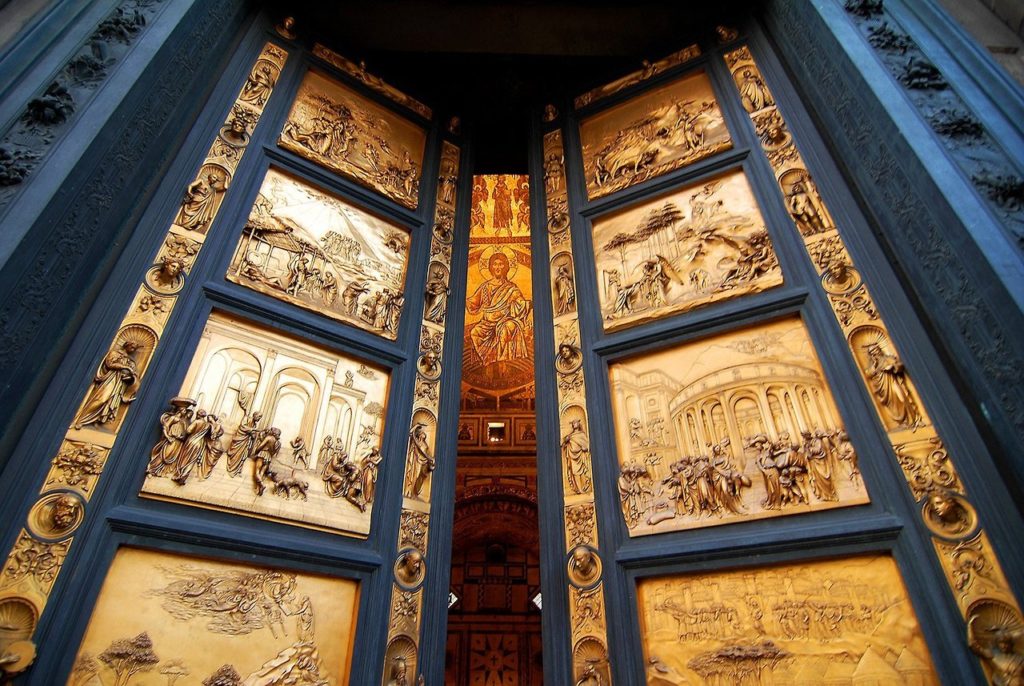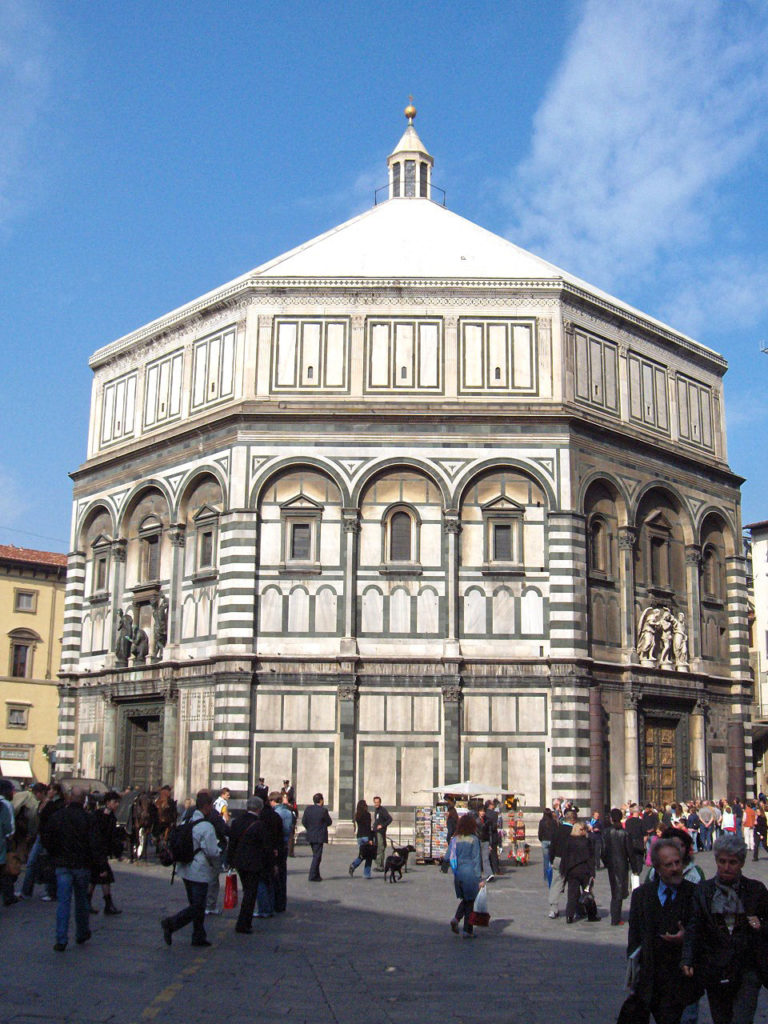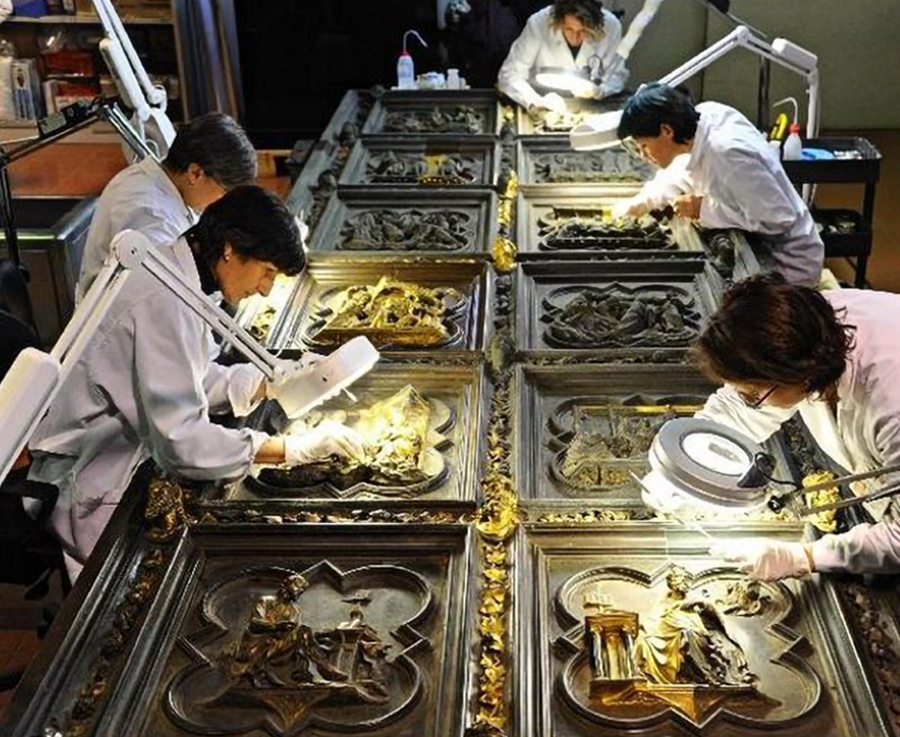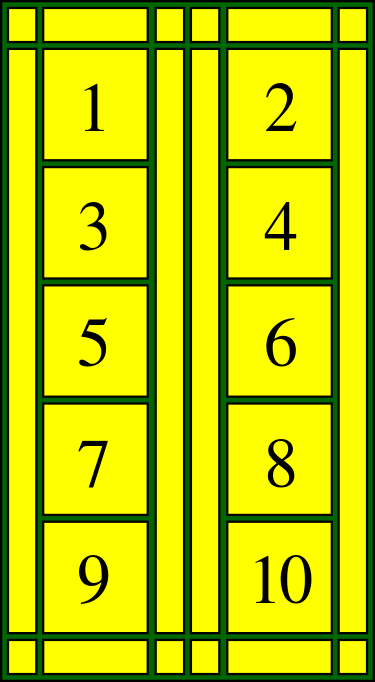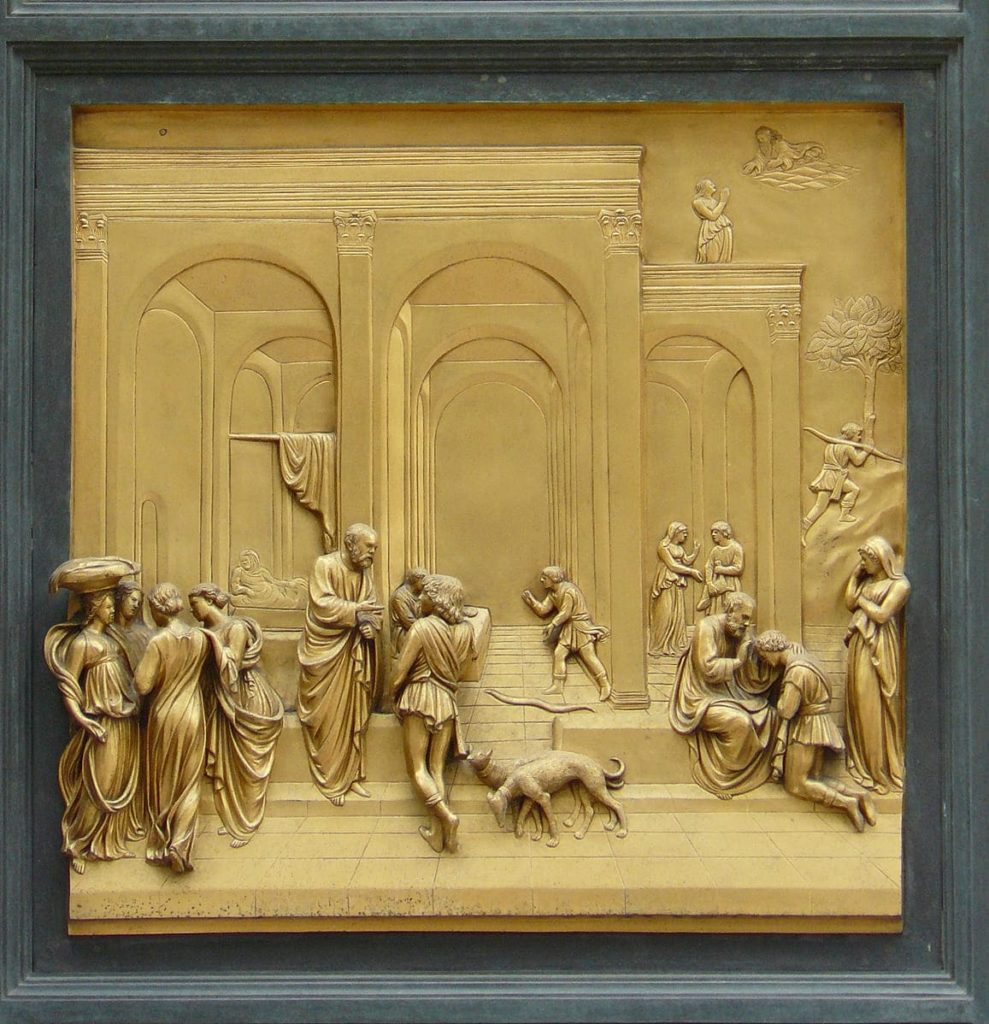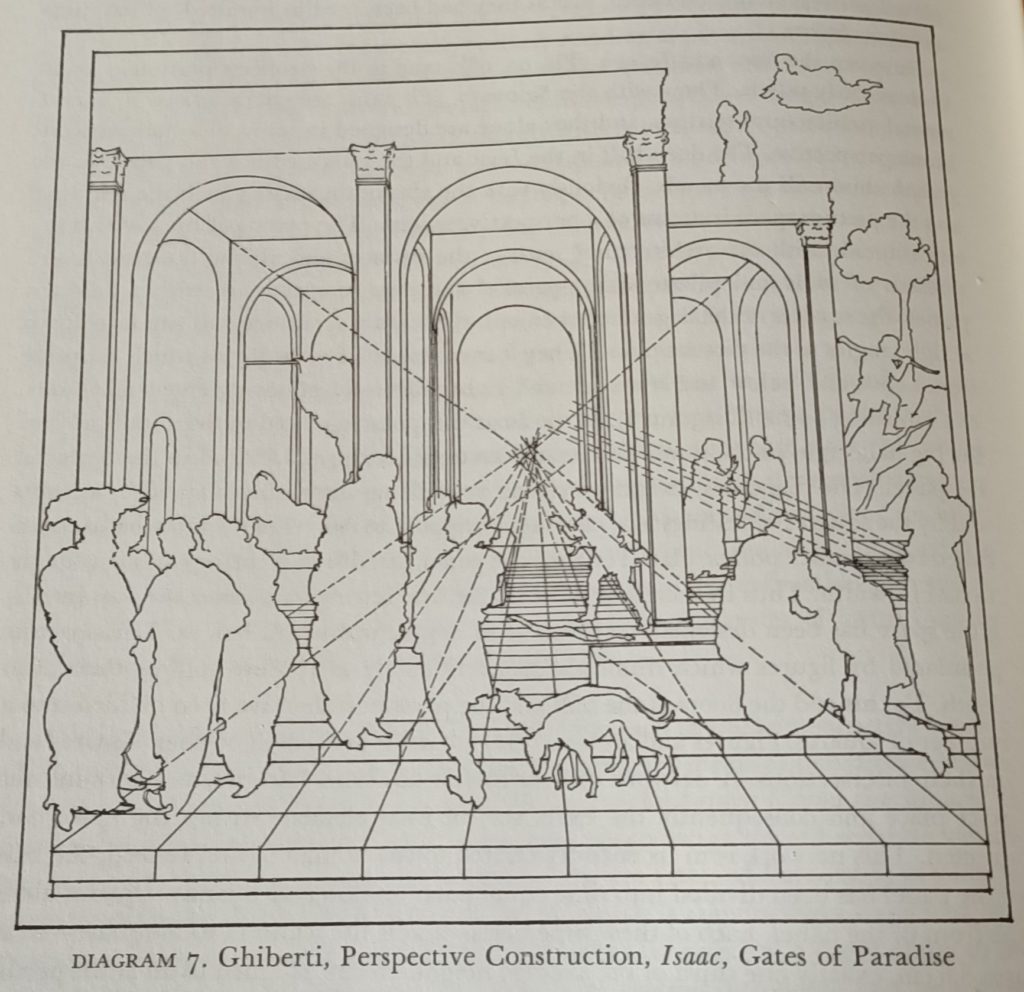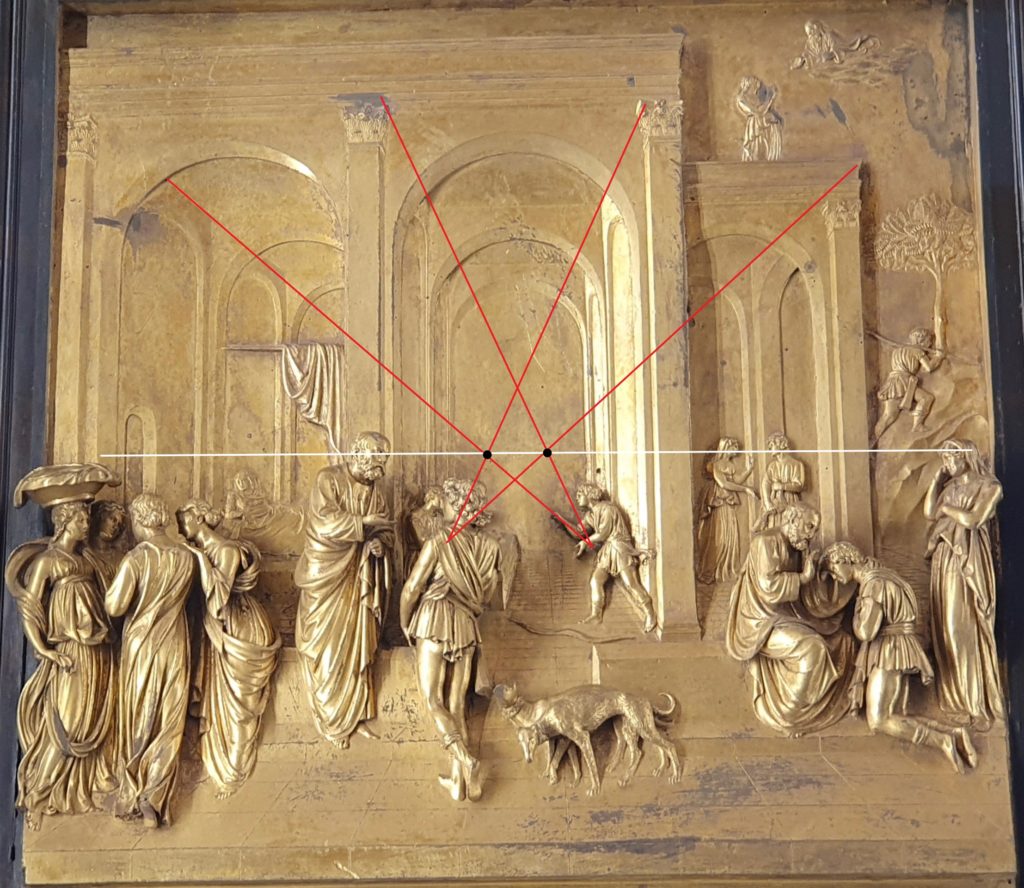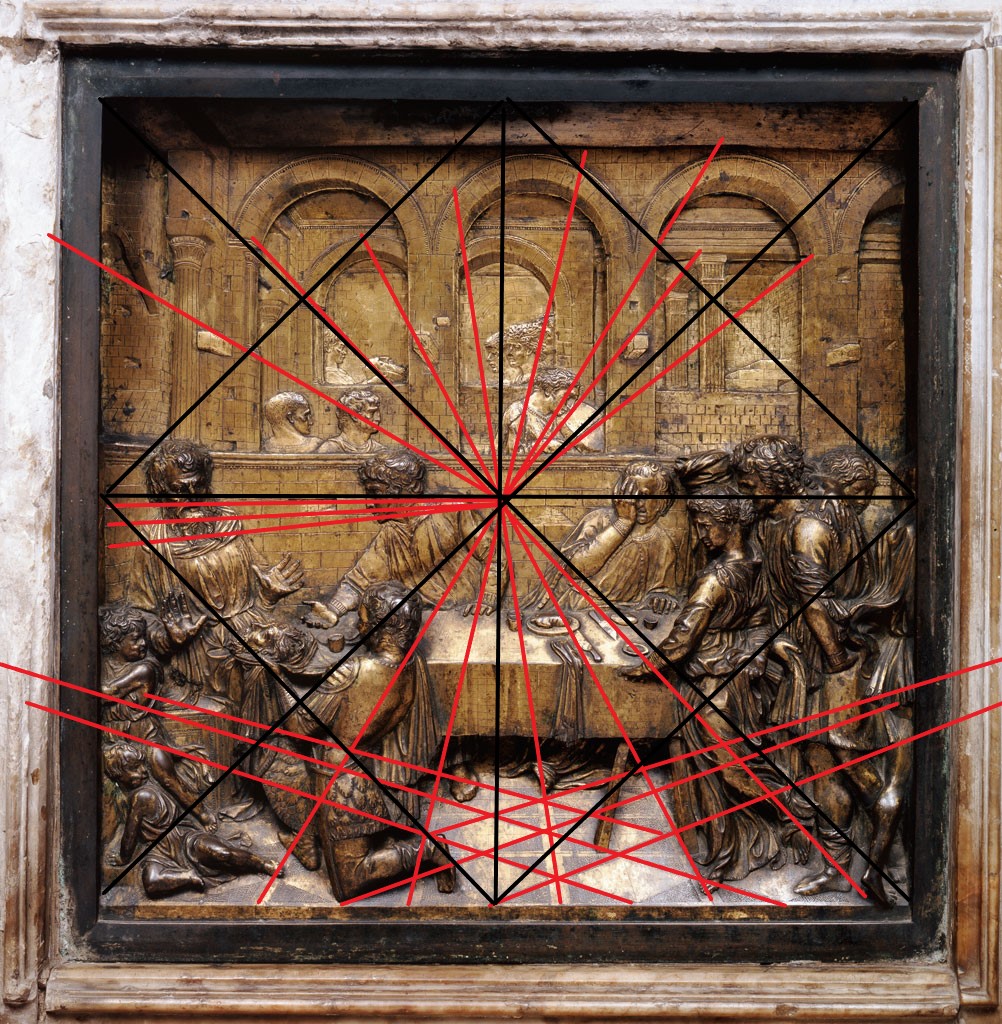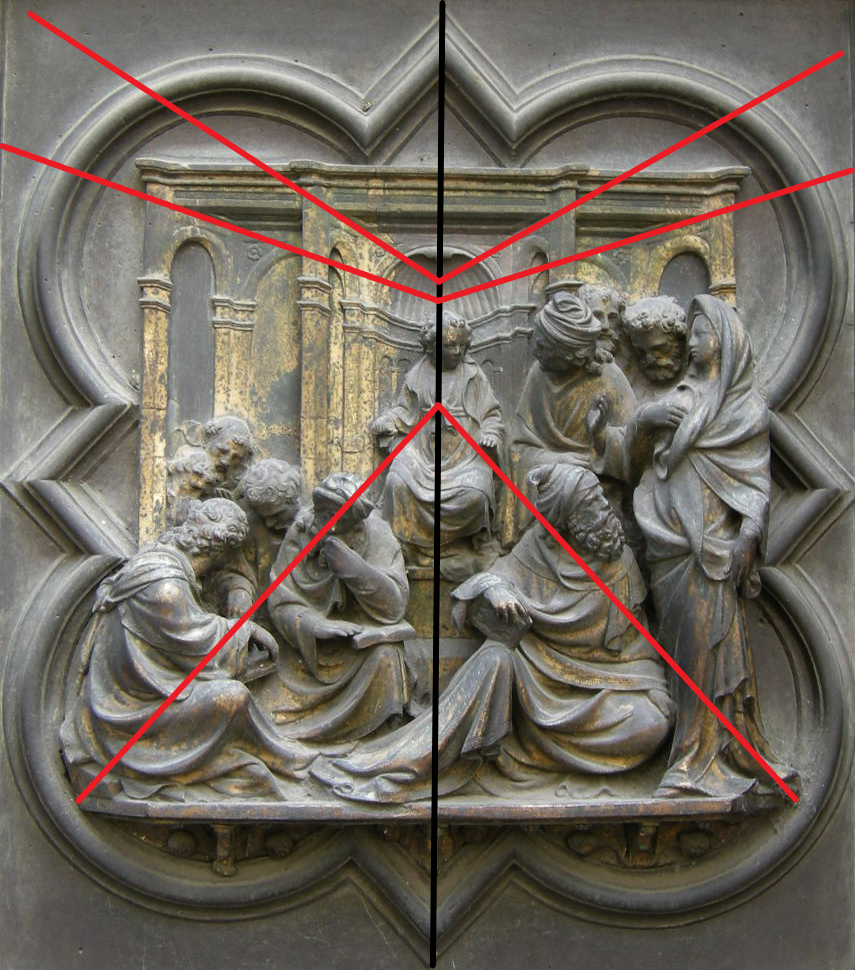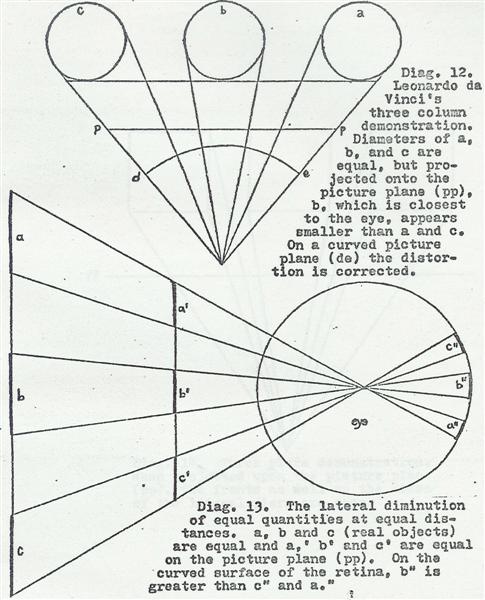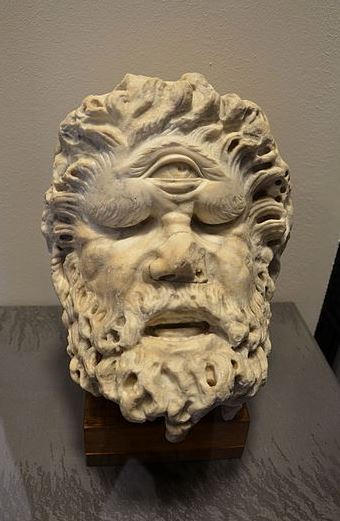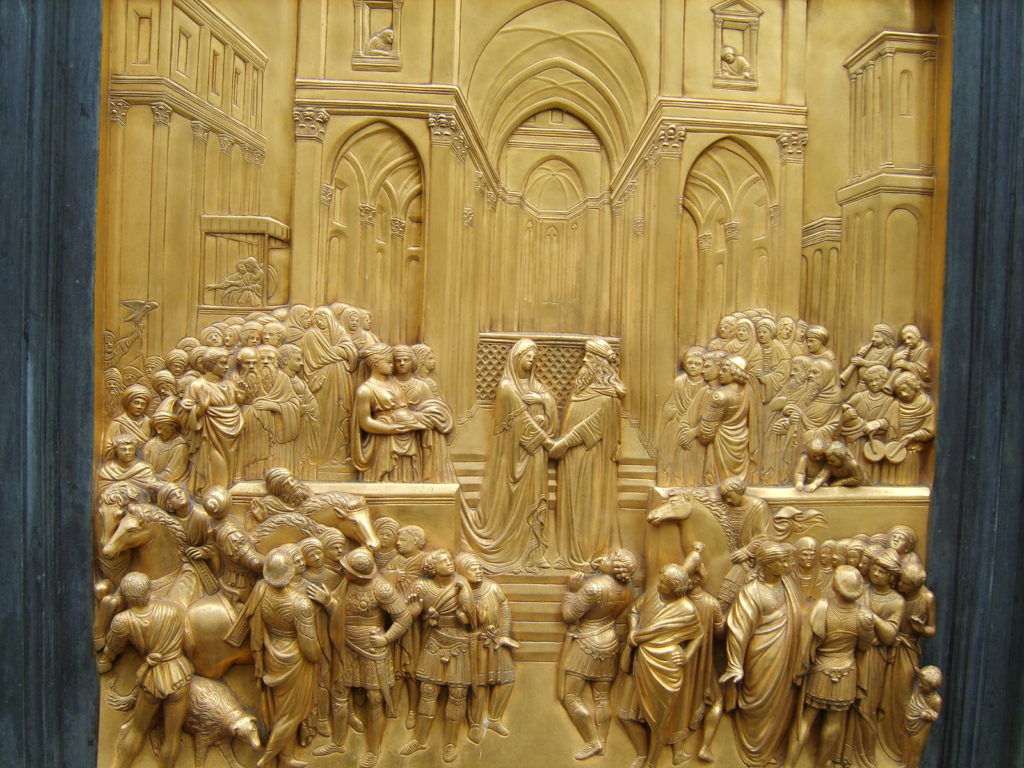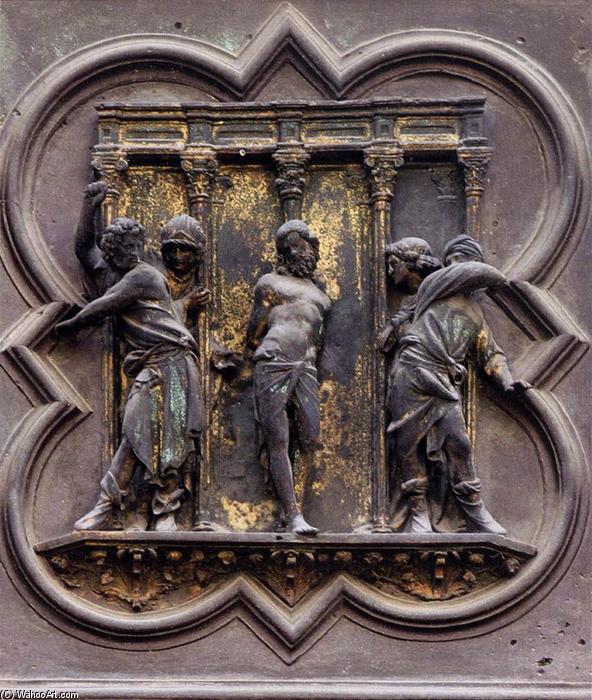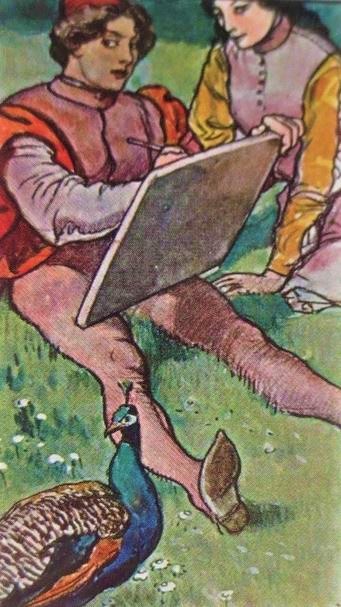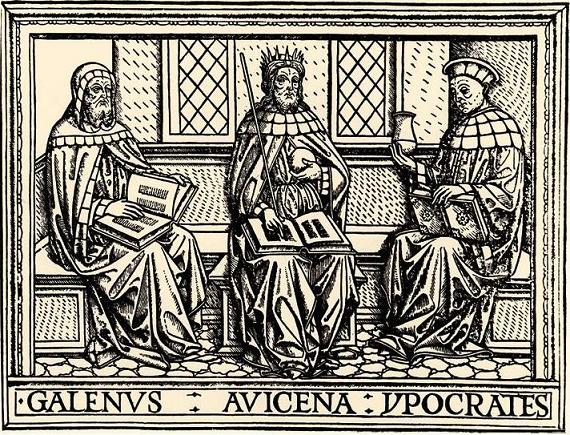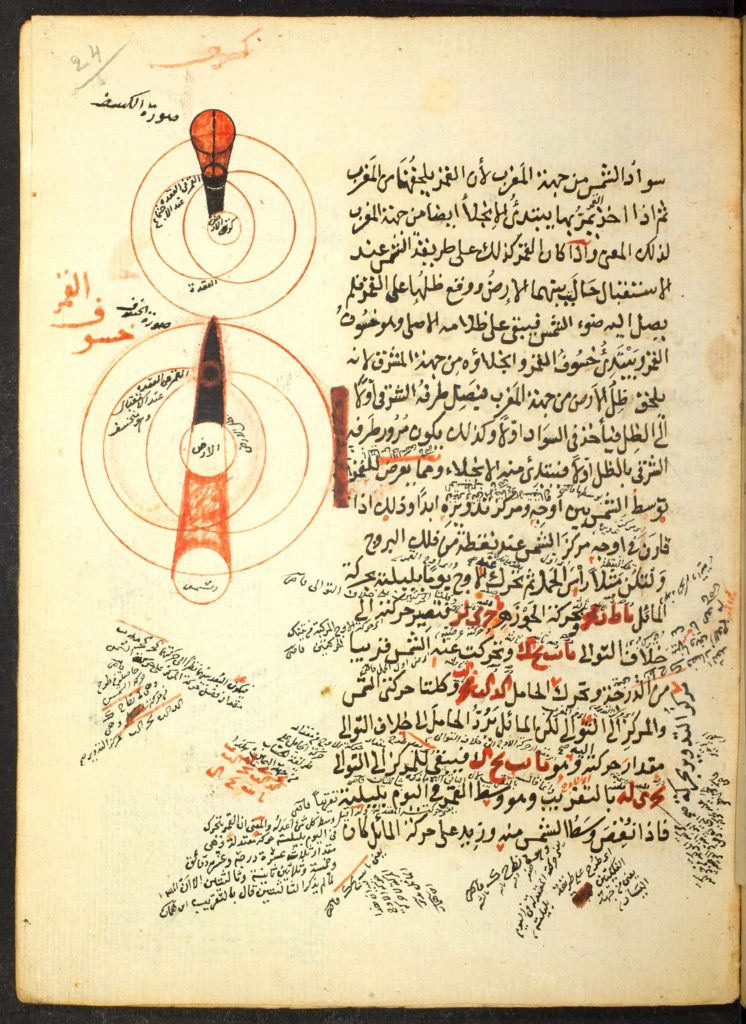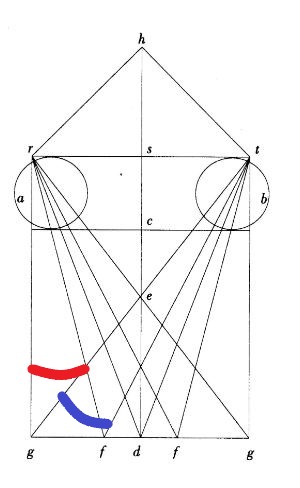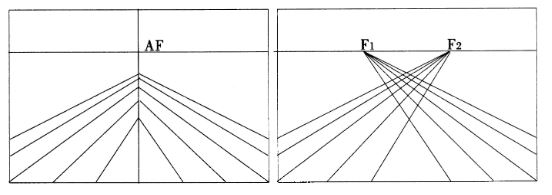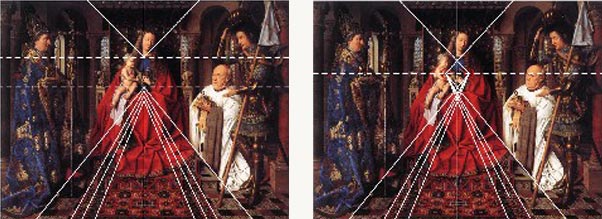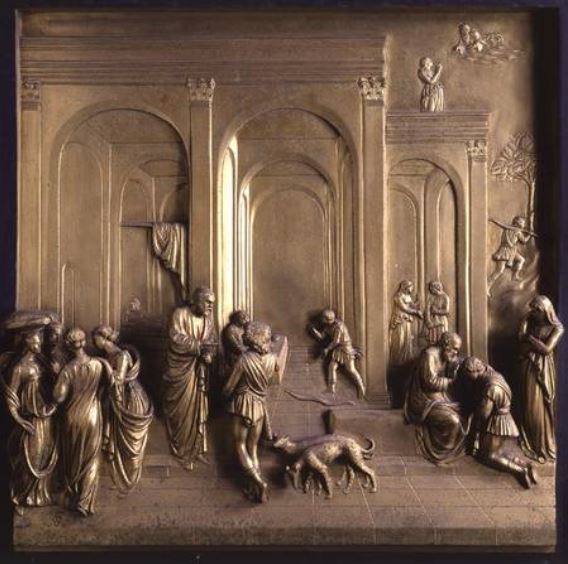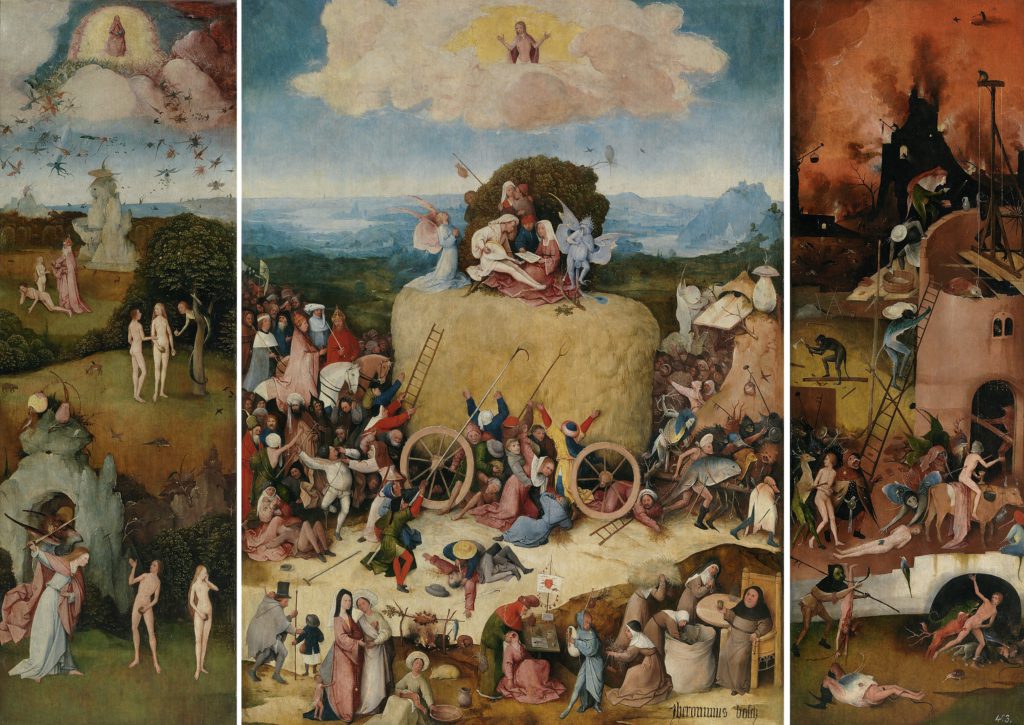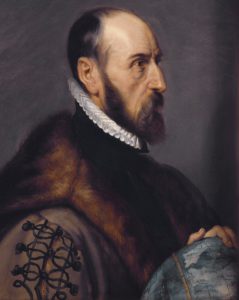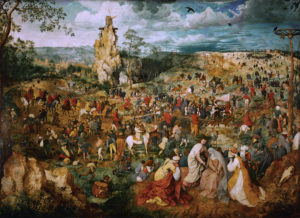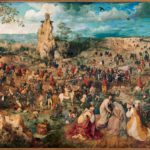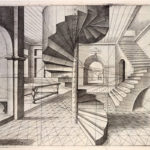En septembre 1999, Karel Vereycken s’est entretenu avec Michael Gibson, un fin connaisseur du peintre Bruegel. Critique d’art au International Herald Tribune, il est l’auteur de nombreuses monographies dont une de Pierre Bruegel (publié en français aux Nouvelles Editions Françaises, Paris 1980 et en anglais chez Tabard Press, New York, 1989). Il est aussi l’auteur d’une « histoire d’un tableau de Pierre Bruegel l’Aîné, le « Portement de croix » (Editions Noêsis, Paris 1996).
Pour Bruegel, le monde est vaste
M. Gibson : La rencontre d’un peintre et de sa peinture implique forcément quelque chose d’anecdotique. En tant qu’enfant j’avais une reproduction des Chasseurs dans la neige dans ma chambre. J’ai été amené à visiter le musée de Vienne où se trouvent pas moins de quatorze tableaux de Bruegel.
Tout cela, a stimulé mes recherches pour en arriver à faire des conférences et écrire sur le sujet. Ce qui m’intriguait aussi, c’était la découverte d’un peintre qui avait la capacité de garder son propre accent flamand pour peindre, au lieu de suivre la mode italianisante de ses contemporains dans les pays du nord. Finalement un jour un éditeur m’a proposé d’écrire un livre sur un tableau particulier. Je crois me rappeler que j’avais le choix entre Bosch, Bruegel et Rothko. J’avoue que c’est plus facile, de le faire sur une oeuvre de Bruegel, bien qu’on puisse écrire sur l’oeuvre de Rothko comme un tout.
Question : Selon vous Bruegel appartient-il à la période que l’historien néerlandais Huizinga appelle le l’Automne du Moyen Age (de Herfsttij der middeleeuwen), ou est-il un homme de rupture, de la Renaissance ?
M. Gibson : Bruegel représente certainement une rupture avec l’esprit médiéval, en particulier sa vision de la nature. Il faut bien voir que dans l’antiquité, la plupart des dieux n’étaient autres que les forces de la nature : le vent, la force, la passion sexuelle, la guerre, etc. Avec la venue du christianisme, ces dieux païens furent transformés en diables, la démonologie étant une espèce de théologie à l’envers. La nature étant ainsi diabolisée, l’esprit médiéval mettait surtout l’emphase sur la vie intérieure.
C’était une démarche novatrice au début du quatrième siècle jusqu’à l’an mille. Il y avait bien sûr des exceptions à la pensée dominante, comme après chez Albert le Grand qui se posait des questions sur la nature et se livrait à des expériences en botanique et dans d’autres domaines. Vu l’esprit de l’époque, ça lui a valu une réputation un peu sulfureuse et encore aujourd’hui on parle du « petit » et du « grand Albert » pour désigner des manuels d’alchimie !
On peut aussi évoquer la célèbre anecdote de Pétrarque qui grimpe courageusement sur le sommet du Mont Ventoux pour y lire les Confessions de saint Augustin. Plongé dans ce texte oraculaire, son regard tombe sur le paragraphe où saint Augustin s’étonne de celui qui cherche à admirer les spectacles de la nature au lieu de chercher à se connaître soi-même. Suite à la lecture de ce paragraphe et profondément troublé, Pétrarque a rebroussé chemin pour redescendre de sa montagne, plongé dans une profonde crise spirituelle.
La conséquence de cette vision fait que la peinture médiévale va traiter la nature d’une façon schématique : on ne peint pas un arbre, mais l’idéogramme d’un arbre ou l’idéogramme d’une montagne. D’ailleurs quand je passe sur le boulevard périphérique de Paris et que je vois de loin les rochers artificiels du jardin zoologique de Vincennes, je dis : voilà le mont Sinaï, parce que c’est comme ça qu’il est représenté dans la peinture médiévale.
L’intérêt pour la nature
Une des caractéristiques de la Renaissance est donc le fait qu’on commence à s’intéresser à la nature, et Bruegel est un observateur de la nature véritable. C’est en particulier son voyage en Italie qui lui a révélé cela. Quand on va de Naples jusqu’à Reggio, ce qui a dû être le parcours du peintre, on voit des paysages extraordinaires. Mais déjà rien que la traversée des Alpes, et on le retrouve dans le tableau la conversion de Saint-Paul (1567) qui est un travail d’atelier, relate ce voyage. On y voit des cols élevés, des vallées profondes avec des nuages en dessous du spectateur. On y voit cette qualité d’observation de la nature et en ce sens-là c’est l’esprit de la Renaissance.
Question : Pourtant, Jérôme Cock, le premier employeur de Bruegel qui dirigeait l’imprimerie Aux Quatre Vents d’Anvers, était le fils de Jan Wellens Cock, un proche de Jérôme Bosch dont les travaux ont inspiré Brueghel et qui est plein « d’intériorité ». D’ailleurs, le thème des Sept péchés capitaux est déjà traité par Bosch avant d’être repris dans les estampes de Brueghel. N’est-on pas obligé de se familiariser avec le langage pictural de Bosch pour pouvoir pénétrer l’univers de Bruegel ?
M. Gibson : Il faut surtout voir en Bosch un homme des villes et un homme du « Mardi Gras ». Les sujets qu’il peint, ce sont les chars qui défilent lors des jours de Carnaval. Prenons le Chariot de foin ou La nef des fous. Ce sont des chars de carnaval et on en trouve les traces dans les archives des villes de Flandre qui en sont très riches.
Le Chariot de foin par exemple part d’un symbolisme très simple : le foin y représente l’argent, la richesse et les gens se battent violemment pour arracher quelques fétus de paille. Derrière le char on voit défiler tous les puissants : rois, empereurs, papes, etc. Et dans leur course vers le foin, ils vont tout droit vers un endroit où personne ne veut aller et qui constitue le troisième volet de ce triptyque : l’enfer. Bosch est surtout un « moralisateur » qui observait les gens des villes et dans un sens c’était un solitaire.
On voit d’ailleurs assez souvent dans ses tableaux (comme sur les volets fermés du Chariot de foi) un personnage aux cheveux blancs, un espèce de colporteur. Et je me demande s’il ne s’agit pas là d’un autoportrait. Ce colporteur passe dans le monde avec une mine désolée dans un paysage plus ou moins désolé aussi.
Bosch n’est pas non plus « l’intériorité » pure de type médiéval, mais ce n’est pas la nature. C’est la vie urbaine. Ce qui distingue Bruegel, c’est l’intérêt pour la nature et l’intérêt pour la société. Bien qu’il fera aussi « Mardi gras » (Le combat de carnaval et carême, en 1559) Ce sera plus dialectique. Il aura le côté ripailleur, mais aussi le côté macabre. On y voit les mendiants, les malades et d’autres gens dans des états épouvantables. Tellement lamentables d’ailleurs qu’un des propriétaires des tableaux à fait repeindre les choses les plus pénibles à voir. Et on le sait parce que Pierre Bruegel le Jeune a fait une copie de cette toile (avant les repeints), qui le démontre. Au premier plan à droite, il y a un drap qui flotte dans le vide, mais en fait sous ce drap il y a un type avec les jambes et les bras émaciés et le ventre ballonné qu’on a fait disparaître. Dans le cercueil que quelqu’un traîne, un surpeint a fait disparaître le cadavre, etc. La démarche de Bosch était surtout moralisatrice, tandis que celle de Bruegel opère par oppositions. Il joue beaucoup sur les effets d’oppositions, entre ce qui apparaît de ce côté-ci du tableau et de ce côté-là. J’ai beaucoup traité cette méthode de composition en écrivant sur le Portement de Croix (1564).
Quant à Jérôme Cock, il a dû demander au jeune Bruegel débutant de reprendre les travaux de Bosch parce qu’il estimait qu’il y avait de l’intérêt pour ce genre de chose et qu’avec un peu de « merchandising » ça se vendrait bien.
C’est ainsi que Bruegel à repris les Vices (1558) et les Vertus (1559-60), thèmes certes médiévaux. Mais il les reprend avec une certaine fantaisie qui en effet doit beaucoup à Bosch, mais qui est quand même moins angoissée. Les monstres de Bruegel sont en général moins angoissants que ceux de Bosch.
Question : Peut-on faire un rapport entre les Adages d’Erasme de Rotterdam (mort en 1536) et le tableau des Proverbes (1558) ? N’y a-t-il pas là une volonté d’éducation populaire ? Bien qu’on soit obligé de constater que les tableaux étaient réservés à un petit cercle de spectateurs, on sait que les estampes circulaient largement.

Pierre Bruegel l’Aîné, 1556, « Ce n’est pas parce qu’on envoie un âne à l’école qu’il revient comme un cheval ».
M. Gibson : Tout a fait. Les estampes sont très souvent des dictons populaires comme Les gros poissons mangent les petits (1556) ; Elck (1558) (l’égoïsme de « chacun » conduit au chaos). Ou encore L’âne à l’école (1556) et L’al-ghemist (1558) (le « tout raté ») qui était une polémique contre les délires alchimistes de l’époque. On pourrait la refaire aujourd’hui contre l’astrologie !
Question : Ce qui étonne, c’est la liberté que laissent les commanditaires pour l’exécution des sujets. Même à la Renaissance italienne, celui qui payait pour l’œuvre imposait toute une série de spécifications pour traiter le sujet. Bruegel semble avoir échappé à ce genre d’exigences souvent capricieuses.
M. Gibson : On n’a pas de détails sur les rapports entre Bruegel et ses commanditaires. Mais on sait quelque chose sur sa personnalité. A l’opposé d’une mode qui fait dire que le peintre historien Vasari « arrangeait » un peu son récit quand il raconte l’histoire des artistes italiens, moi je suis très tenté de croire ce que dit Karel Van Mander dans son Schilder-Boeck (1604). Je pense même que Van Mander a pu rencontrer la veuve de Bruegel qui, me semble-t-il, est allée vivre à Anvers. Il raconte des choses très savoureuses sur Bruegel. Comment il allait avec son ami Frankert, habillé en paysan dans les noces à la campagne en se présentant comme un membre de la famille. Et ça l’amusait beaucoup et il y affirmait son esprit d’indépendance. Dans un environnement culturel avec une forte propension à la tolérance, à l’ouverture vis-à-vis des convictions de chacun, de respect mutuel qui existait à l’époque à Anvers, Bruegel était capable de dire : écoutez j’ai telle ou telle idée. Qui en veut ? Et les autres pouvaient dire « pourquoi pas ? ».
Mais tout cela est hypothétique. Si on travaillait pour une église, c’était différent. Mais on n’était pas encore à la Contre-réforme parce que c’est elle qui a donnée un encadrement idéologique à l’iconographie. C’était aussi strict que le social réalisme communiste ! A partir d’un certain moment, certains sujets sont permis et d’autres ne le sont pas. Et il faut les représenter de telle ou telle manière. L’humour, l’ironie et le pittoresque sont exclus. Si on regarde les manuscrits enluminés médiévaux, on trouve dans les marges toutes sortes de personnages : des petits chiens, des oiseaux, des fleurs etc. ; c’est savoureux, c’est vivant. L’art de la Contre-réforme est pour moi un art mort, théâtral au mieux.
Question : Vous faites référence à des documents précis ?
M. Gibson : Oui, c’est un fait historique. A partir du Concile de Trente (1545-53) on commence à réglementer les choses. Toute la production artistique à partir de ce moment devient complètement stéréotypée.
La majeure partie de l’œuvre de Bruegel date d’avant l’époque de la grande répression, et il meurt en 1569, peu après l’arrivée du duc d’Albe (1567) et avant l’installation définitive de l’Inquisition aux Pays-Bas. En réalité il est encore dans une espèce de période de grâce, entre le Moyen-Âge et le moment où la Contre-réforme referme les volets.
Question : On sait depuis l’article de Popham en 1931 que Bruegel se lia d’amitié avec l’humaniste cosmographe Abraham Ortels (Ortelius).
Ortels était membre de la Scola Caritatis une « secte religieuse fondée sur la tolérance » de Hendrik Nicolaes, dont faisaient également partie l’imprimeur Plantin, le cartographe Mercator, le graveur Goltzius ainsi que le penseur religieux et proche de Guillaume le Taciturne, Dirk V. Coornhert.
On y trouvait aussi le meilleur ami de Bruegel, l’amateur d’art Frankert. Depuis lors on admet que Bruegel n’était pas « Bruegélien » dans le sens du « mangeur de saucisses », mais un érudit humaniste. Bruegel était-il sympathisant ou opposant de la réforme ?
M. Gibson : Le groupe de la Scola Caritates préconisait précisément la tolérance. En réalité il avait à mon avis une sympathie pour les prédicateurs de la réforme. On les retrouve dans le tableau sur les « Hagepreken », La prédication de St Jean Baptiste (1566). Ce sont les prédications calvinistes qui se déroulaient de façon clandestine dans les bois. Les gens sortaient des villes pour y assister. Le pouvoir en place donnait comme instructions aux gardes de relever les identités de ceux qui partaient.
Alors les gens leur lançaient « Tu m’as bien vu ? » « T’as bien noté mon nom ? ». Les gens étaient révulsés par le traitement qu’on infligeait aux hérétiques qu’on torturait d’une façon abominable. C’était spécifié dans les Placards de Charles Quint : les hommes tués par l’épée, les femmes enterrées vives. Bruegel est un humaniste, c’est quelqu’un qui s’oppose à ce genre de violence.
Ce n’est pas un dogmatique, c’est quelqu’un qui apprécie l’individualité des gens. C’est pour ça qu’il peut aller dans les fêtes paysannes et qu’il peut les représenter sans mépris : à la fois avec leur côté brutal et primaire, mais aussi avec leur dignité. Parce qu’il leur donne des proportions qui sont empruntées aux personnages de Michelange ! (rire…)
Une œuvre pour la mémoire
Question : Dans votre essai sur le Portement de Croix vous identifiez des références très précises à la situation politique de l’époque. Par exemple vous avez découvert que les soldats qui mènent le christ vers le Golgotha sont une allusion directe aux « Roode Rocx », les tuniques rouges des gendarmes mercenaires au service de l’occupant espagnol. Est-ce qu’il en a d’autres et est-ce que l’art ne perd pas son universalité en se « mouillant » pour des choses aussi immédiates ?
M. Gibson : Aujourd’hui c’est différent, parce que nous avons cette idée de la diffusion de l’art. Mais là c’étaient des choses qui étaient peintes pour des intérieurs. Donc ça représente ce que se passait à cette époque. Et si vous voulez comprendre ce qui se passait à l’époque, il suffit de voir ce qui se passe aujourd’hui ! La démarche de Bruegel consiste à utiliser la situation politique immédiate pour faire comprendre l’histoire du Christ en non pas de prendre l’histoire du Christ pour condamner les exactions espagnoles. C’est ce qui me semble et même si c’est le contraire, il reste que ce sont des œuvres qui sont gardées à la maison. Bruegel n’a pas fait des gravures sur ces sujets-là.
Pour Francesco Goya, on peut dire la même chose, ce n’est pas non plus de la peinture « militante », parce que c’est de l’après-coup. C’est un témoignage de quelque chose qui est vécu d’une façon très intime. C’est très différent de ceux qui font de la propagande et ce n’est pas de la propagande parce que ce n’est pas diffusé. Si cela avait été des placards collés sur les murs de Bruxelles c’eut été autre chose, mais cela n’aurait pas eu la même qualité non plus.
Question : Mais cette vision de la tolérance a finalement nourri et préparée la révolte des Pays-Bas.
M. Gibson : Pour cela il faut voir l’ensemble du milieu culturel dans les Flandres à cette époque. Le secret en était les « chambres de rhétorique » qui organisaient des tournois d’écriture et de poésie. Les membres en étaient surtout les nouvelles classes moyennes. Tous les sept ans, l’ensemble du pays se retrouvait pendant un mois à faire la fête dans un Landjuweel (Joyau national) comme celui d’Anvers de 1561. On y faisait des déclamations publiques, des sketches moralisateurs, du théâtre de rue, etc. Tout cela donnait lieu à un très haut niveau de culture.
(Sur les chambres de rhétorique et le Landjuweel d’Anvers de 1561, voir Michael Gibson, Le portement de croix, Editions Noêsis, Paris 1996, p.27, ainsi que « Histoire de la littérature néerlandaise » de Stouten, Goedegebuure et Van Oostrom, Fayard, mai 1999, chapitre II, « Le bas moyen âge et le temps de la rhétorique » p.71-155.)
Question : Je reviens sur la question des paysages. Vous avez dit que c’est la nature, mais finalement ces paysages n’ont jamais existé, ni en Flandres ni en Italie.
Certains les ont appelés Weltlandschaft (paysage mondial) et même Uberschauweltlandschaf
M. Gibson : Il faut voir qu’une fois qu’on comprend comment fonctionne la nature, on peut créer des paysages qui correspondent à une espèce de « théâtralité ». Cette dimension théâtrale les élève au-delà du réalisme géologique et il s’y opère une espèce de transposition, d’intensification de quelque chose qui est naturel.
Un amour sage et authentique de l’homme
Question : Quel message porte Bruegel pour notre monde d’aujourd’hui ? Que faut-il faire pour intéresser nos contemporains à ce peintre ?
M. Gibson : Les gens sont spontanément attirés par Bruegel parce qu’ils ressentent quelque chose d’universel. J’explique ce mot parce que l’expression est devenue un peu bateau. Bruegel montre tout ce qui existe de la petite enfance jusqu’à la vieillesse ; du jeu de l’enfant jusqu’aux plus abominables tortures. Il y a une juxtaposition des deux. C’est pour ça que je suis tellement frappé par ce groupe qui s’avance vers le Golgotha dans le tableau Le portement de croix. On y voit un grand garçon qui chipe le bonnet d’un petit enfant qui tente de le reprendre. Et juste à côté on prépare la mise au mort des malheureux qui vont monter vers le Golgotha. Les deux larrons aux visages gris, assis dans la charrette. Et le Christ qui est là, perdu dans la foule immense. Tellement il est petit dans ce grouillement humain qu’on a du mal à le retrouver.
Mais ça c’était déjà un thème qui remonte à Van Eyck. Ce que je veux dire c’est qu’il y a une simultanéité de la comédie et de la tragédie. Ce qui fait qu’il y a une « ampleur Shakespearienne ». Parce que le monde est vaste.
Quand on voit une pièce de Shakespeare, on a l’impression qu’on peut respirer. Il y a un grand vent qui arrive de la scène. Le monde est vaste.
Vaste, à la fois parce qu’on découvre à cette époque l’immensité du monde, mais aussi parce qu’il y a tout ce qui se passe dans l’homme : sa capacité d’héroïsme et sa capacité malfaisante, son hypocrisie et sa bonne foi. Shakespeare croit au caractère poétique du monde. Le monde est un immense poème dont il retire des choses. Et Bruegel c’est un peu ça, c’est aussi ça.
C’est un monde où les codes du « bon goût » ne sont pas imposés. Le bon goût stylistique disparaît. Le naturel s’y exprime. Ca semble un peu grossier. Comme l’homme qui baisse son pantalon et chie, dans le coin à gauche dans La pie sur le gibet (1568).
Mais tout ça fait partie de l’humain. Il y a dans ce tableau cette petite foule de gens qui danse.
Selon moi il s’agit du soulagement provoqué par le départ des Espagnols. Ils sont partis, on ne pend plus les gens. D’ailleurs il n’y a plus de cadavres accrochés au gibet. Il ne s’agit pas de la grossièreté du langage d’aujourd’hui du type « tu me fais ch… », mais de la liberté de l’enfant qui s’exprime par voie anale parce que c’est naturel, ça aussi fait partie du monde. Et le fait que ça figure dans un tableau fait qu’on va du sublime jusqu’au trivial. Tout cela fait un tout.

